
Chinese tourists: the mismatch between stereotype and reality
Chinese tourists: they are immediately recognized all over the world. They come together in big troops, they like to take many pictures, and they do not recognize your garden as private property. This description is the mainstream Western image, or rather stereotype, of Chinese tourists.
On the internet there are many negative articles and videos that reflect this stereotype. For example: 5 reasons why Chinese tourists are so rude, a Swedish video about how the Chinese need to behave in Sweden, a video about How to be a Chinese tourist, a video about Chinese tourists who need to stop pooping, making noise, stop picking, and stop yelling when they are abroad - and there are many more examples.
However, the travel behavior of Chinese tourists has changed in the past years from an ‘altogether, all-in vacation’ to a more ‘free and independent’ way of traveling. Social media, and especially the Chinese social media giant WeChat, have had a big influence on this change. The influence of social media is a feature of globalization. Through social media, people all over the world can connect with each other. Therefore habits, customs, and behavior that fit a particular local culture can become more global. For example when I want to know something about Chinese culture, I can use Facebook. It is no longer necessary to first travel to China before knowing something about their culture. Appadurai (1996) calls the phenomena of local cultures becoming more global ‘culturescaping’.
As mentioned above, the travel behavior of Chinese tourists has changed into a more free and independent manner of traveling. Because of this, I asked myself whether Western stereotypes of Chinese tourists still fits the current behavior of Chinese travelers. In this article I will first focus on the Western stereotyping of Chinese tourists and its countermovement, then I will dig deeper into the history of China to explain their touristic behavior. Finally I will go into the current changes in behavior and the role of social media therein.
The stereotype
Stereotypes can be defined as a socially shared set of beliefs about traits that are characteristic of a certain social category (Greenwald & Banaji, 1995). Once a stereotype is widely ingrained, it takes a lot of effort and energy to change it. Therefore, it is easier to rely on existing stereotypes than to create new ones. This is also the case with Chinese tourists. Before I explain the behavior of ‘new’ Chinese tourists, I will first focus on the Western stereotype. As I mentioned above, there is a lot of negative stereotyping of Chinese tourists online. The following Western set of beliefs is drawn from the online sources in the introduction:
- They travel in large groups
- Chinese tourists want to see everything in a hurry
- They prefer an all-inclusive package
- They poop in public
- They spend a lot of money at shopping malls
- They burp, puke, and smoke wherever they want
- They speak very little English
- They do not follow the rules
- Everywhere they go, they take 10,000 pictures
- They cut lines at tourist attractions
- They speak very loudly.
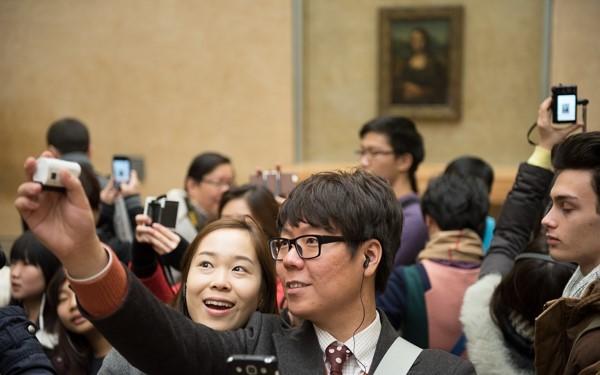
Chinese tourists at the Mona Lisa
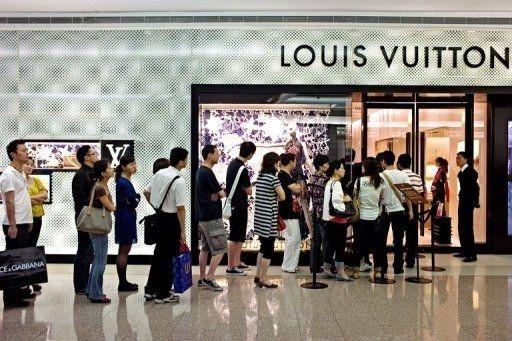
Chinese tourists waiting for Louis Vuitton
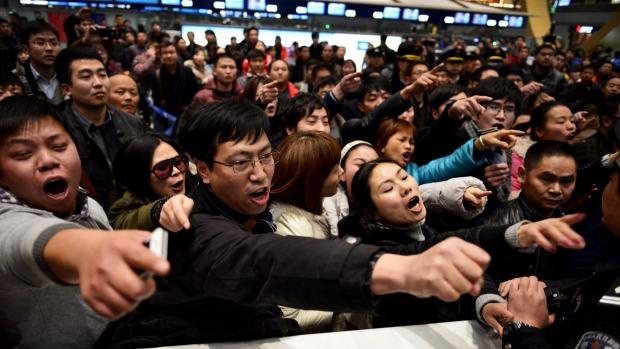
Chinese tourists behaving badly overseas
Many more negative beliefs can be found online. Take all these points together and we might call this behavior ‘uncivilized’. This behavior also didn't go unnoticed within China itself. According to the Telegraph, in May 2013 former Vice-premier Wang Yang asked the Chinese citizens who are able to travel overseas to improve their behavior. He stressed that the behavior affected the overall image of China (The Guardian, 2013):
"They speak loudly in public, carve characters on tourist attractions, cross the road when the traffic lights are still red, spit anywhere and [carry out] some other uncivilized behavior. It damages the image of the Chinese people and has a very bad impact."
Besides the offline reaction of Wang Yang, online there can also be found many examples that show that the Chinese themselves are ashamed of their fellow countrymen. On YouTube, the video ‘How to be a Chinese tourist’ aims to show the behavior of Chinese tourists in France and to investigate where this behavior comes from. The video shows some examples that confirm the Western stereotype: the Chinese travel in big groups, they have 10 days for the whole of Europe, behave rudely to each other, push each other in front of the Mona Lisa, and spit and burp. Some online reactions from (former) fellow countrymen are as follows:
Countermovement
Besides all the negative reactions that confirm the Western stereotype of Chinese tourists, there are also a lot of positive reactions to the video ‘How to be a Chinese tourist’ that defend Chinese tourists' behavior. The main argument for changing one's view of Chinese tourists is that they really do not know how to behave in another country due to their isolated history. A lot of first-time travelers are not used to having a large amount of money to spend.
Besides this, it is often mentioned in the reactions that the Western stereotype is based on the behavior of the ‘old’ generation of tourists. This generation grew up in communist China, was very poor, and learned no manners. Today China has modernized, but the ‘old generation’ still has no idea how to behave. These ‘old generation’ travelers take their behavior with them on vacation and it does not fit Western standards. This causes negative stereotypes. According to the comments on the video, the ‘new’ Chinese generation is more polite and well-mannered, travels independently and is more aware of how to behave in another country. A women wrote under the YouTube video:
"Give them another 10 years, and you will see that bad manners disappear. This is after all the first era when mainland China are given passports to see the world."
More and more online articles confirm this reaction. Their aim is to convince the reader that the behavior of the 'new' generation Chinese tourists is changing. For example the article: Chinese travelers are changing their travel behavior and many more similar articles can be found. It can be said that a countermovement has started to show the world that the behavior of the 'new' generation Chinese tourists is not so bad as the stereotype (based on the 'old' generation) suggests.
In conclusion, two groups of travelers can be distinguished, namely the ‘old’ and ‘new’ generation of Chinese tourists. The behavior of the ‘old’ generation has led to the Western stereotype and the ‘new’ generation is paying the price for it. Why is it that these two generations differ so much in travel behavior? In the following, I will briefly go into the history of China to have a better understanding of the differences between these two groups.
A bit of Chinese history
Back in 1980, it was only possible for a select group of Chinese citizens to travel overseas. Every trip had to be approved by the government, and only official business trips were allowed. In 1990, it became easier to obtain a travel visa, especially for group tours. China's neighboring countries immediately saw an opportunity and began to issue visas on arrival and leisure visas for tourists.
However, it was easier to obtain group visas than individual visas, because of the fear of illegal immigration. When a country issued a group visa, the tour operator was responsible for everyone to return to China. Therefore, the risk of Chinese citizens staying illegally in other countries was reduced. While China's neighbors acted accordingly with the growing group of Chinese tourists, Western countries did not. They were too suspicious that the main group of Chinese tourists would not return to China after they obtained a visa. This stereotype of Chinese tourists persisted until after the Olympic Games in 2008 in Beijing.
After this big event, Western countries realized that there are Chinese citizens who can afford to travel and are not willing to stay illegally in Western countries. Since then, Western countries have been more open to Chinese tourists (Jaffe, 2013). While in 2000 the number of overseas visits made by Chinese tourists was 10.5 million, the forecast for overseas visits in 2018 is 156 million in total (Telegraph, 2018). Despite the ever-growing group of Chinese tourists, not every Chinese citizen is able to travel across borders. Only about 6% of Chinese citizens had a valid passport in 2016 (Reed, 2016).
As a result of the earlier difficulties in obtaining visas, a lot of Chinese tourists are now visiting Western countries for the first time. This ‘old’ generation group is not used to a foreign language, they do not know other cultures, and they feel unsafe outside the borders of China. For that reason, this group of tourists prefers organized group tours to feel more safe and secure together. Besides this, the group guide often speaks Mandarin (Jaffe, 2013). However, the next travel generation, which also can be referred to as millennials, is more used to traveling. This ‘new’ group of travelers and how it is developing will be described below.
The rise of the independent traveler
Today Chinese millennials are the biggest group of travelers. According to Dragon Trail Interactive, a platform for Chinese outbound tourism, digital marketing, and travel marketing, 60% of overseas Chinese travelers are millennials (see figure 1). These Chinese millennials are sharing a lot of information on social media (see figure 2).
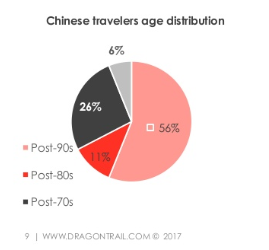
Figure 1. Chinese travelers age distribution
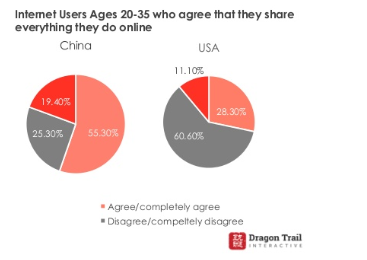
Figure 2. Internet use millennials
Millennials are those who were born between 1980 and 2000. Before 1990 it was almost impossible to travel overseas, but now 93% of this ‘new’ group considers traveling an important part of their identity. Besides this, millennials typically spend around 27% of their income on traveling (Dragon Trail, 2018). Figures from Dragon Trail show that traveling has becomemore important for people from China than for people from the UK or USA (see figures 3 and 4).
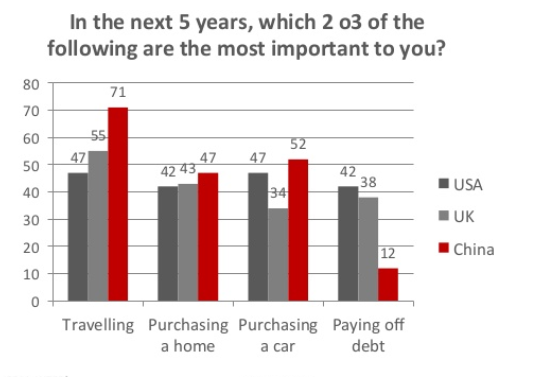
Figure 3. Travelling becomes important for Chinese millennials
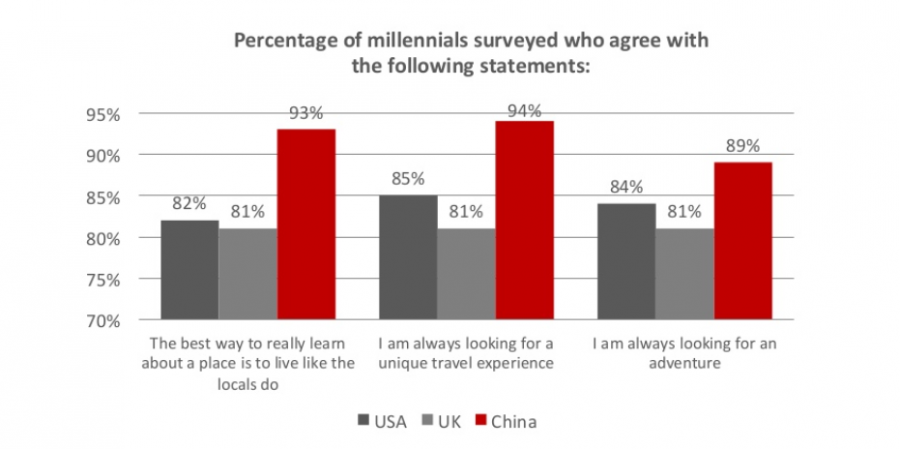
Figure 4. Millennials about travel behavior
Figure 4 shows that Chinese millennials are more likely to seek out unique travel and adventures, and that they are willing to live like the locals do to learn about their particular culture. This behavior seems like the opposite of the ‘old’ generation of travelers who want to travel in groups. This group of independent travelers includes wealthy millennials from first and second-tier cities. The different city tiers imply different income levels, customer behaviors, and business opportunities. The first-tier cities are Beijing, Shanghai, Guangzhou, and Shenzhen, which are very likely to be future global cities. The second-tier cities include Tianjin, Nanjing, Hangzhou, Suzhou, Wuhan, Xi’an, Shenyang, Chengdu, and Chongqing, which are also important for the Chinese economy (Quora, 2016).
The online world is important for the ‘new’ generation of travelers (see figure 2). They are more likely to use digital tools to plan their trip than group travelers who want tour operators to plan everything. Below, the importance of Chinese social media is dealt with in order to create a better understanding of why it has an influence on Chinese travel behavior.
Influence of social media on behavioral change
The Internet can be seen as the main infrastructure of globalization. However, the online world is also fed through globalization, because more and more online activities arise. Castells (2011) states in his book The Rise of the Network Society that globalization shapes new forms of social structures. He argues that the world has gone from an industrial society to a network society. It is a reshaping of society with more complex and winding information flows.
An example of a new information flow is information sharing through the internet. This ‘new’ opportunity for communication is a driver of behavioral changes among ‘new’ Chinese tourists. Social media plays an important role for the Chinese millennials when it comes to traveling. WeChat and Weibo are especially important media (Dragon Trail, 2018). WeChat is the most popular social media app in China. It has almost 1 billion active users and 60% of the users are between ages 16 and 35. This fits the population of millennials, or in other words, ‘new tourists’.
47% of millennial travelers obtain their travel information through their friends on WeChat. Additionally, 48% of the Chinese millennials who are able to travel receive their travel information through WeChat subscription accounts. Besides WeChat as an inspiration and information platform, flights can also be directly booked through WeChat, cars can be rented, and companies can send their Chinese customers a guide for driving rules or suggesting car routes. Therefore WeChat is a multi-layered medium with different purposes (Dragon Trail, 2017). It consists of four layers, namely:
- Communication layer: Communication with friends and families
- Marketing layer: Organizations use the platform to market their goods and services
- Social layer: Inspiring friends through the ‘moments wall’ where you can show all your photos/videos
- Service layer: Users can buy and pay for goods and services with WeChat.
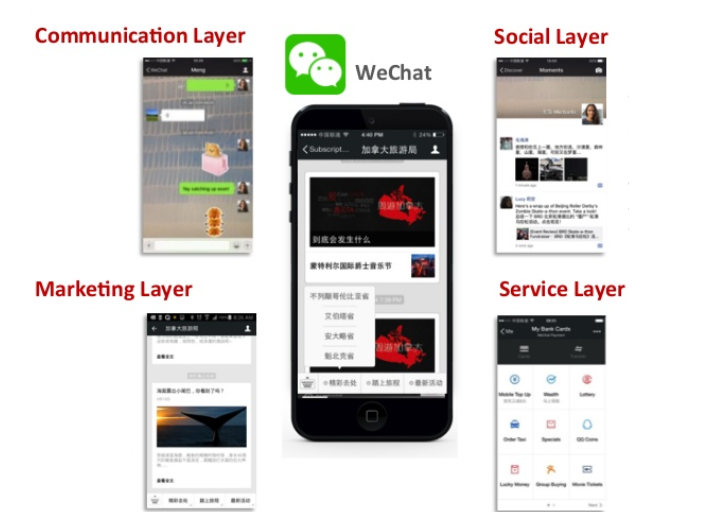
Different layers of WeChat
The social media site Weibo is also used for gathering travel information. This medium has 411 millionactive monthly users. Travelers can share their videos or live stream through Weibo. Two billion videos are watched daily on this platform, and it is therefore mostly used as source of inspiration.
Both platforms have a big influence on the behavior of the ‘new’ Chinese travelers. Users of the platforms can connect with friends, family, celebrities and other people with an account. Through the online connection, the ‘new’ travelers can become familiar with how to book their trip, as well as the culture, habits, and language of another country. They can learn from other WeChat and Weibo users. The online platforms consist of all new information that the ‘old’ Chinese travel generation was not familiar with.
Not all of the ‘old’ generation travelers will make use of the new network flows which result from the network society. Therefore, the reshaped society will be double-layer, which means that the ‘old’ and ‘new’ generations travelers live together in the same society. To conclude, social media is an important factor that created behavioral changes in Chinese tourists. Therefore we can say that the online world (network society) is a driver behavioral change for Chinese tourists. The new independent travelers know better how to behave in other countries and therefore do no longer fit the western stereotype of Chinese tourists anymore.
Mismatch between stereotype and reality
Stereotypes are stereotypes. But the stereotypes of Chinese tourists are now even more useless. The ‘new’ travel generation is a whole new group of travelers with other customs, wishes, and above all another social behavior than the ‘old’ generation travelers. Globalization and social media are the main components of changing behavior for Chinese tourists. Through the rise of Chinese independent travelers, it can be said that the Western stereotype of Chinese tourists does not fit reality at all. But as always, we should not forget that it is hard to change a stereotype.
References
Appadurai, A. (1996). Modernity al large: cultural dimensions of globalization. University of Minnesota Press.
Castells, M. (2011). The rise of the network society. John Wiley & Sons.
Dragon Trail Interactive, 2017, How to reach Chinese independent travelers
Dragon Trail Interactive, 2018, Reaching the Chinese traveller online
Dragon Trail Interactive, 2017, China outbound travel and digital trends
Greenwald, A. G., & Banaji, M. R. (1995). Implicit social cognition: attitudes, self-esteem, and stereotypes. Psychological review, 102(1), 4.
Reed, 2016, Chinese extend lead as the world's biggest spenders on foreign travel
Jaffe, 2013, How the Chinese learned to embrace independent travel
Telegraph, 2013, China's new guide to 'civilised tourism'
Telegraph, 2018, The unstoppable rise of the Chinese traveller – where are they going and what does it mean for overtourism?
The Guardian, 2013, Chinese tourists warned over bad behaviour overseas
Quora, 2016, China's cities tier